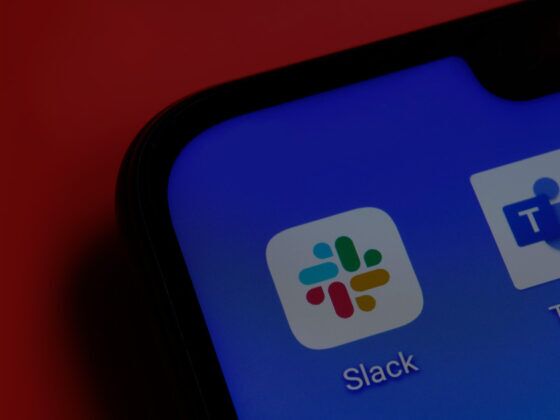A guest-post by Joshua Gilliand of Bow Tie Law
There are phrases a lawyer never wants to hear a judge say. One is your law firm “acted negligently in failing to comply with its eDiscovery obligations.” Another is your client “acted willfully in failing to comply with its discovery obligations and assist its outside counsel to properly litigate this case in accordance with the Federal Rules of Civil Procedure and the Federal Rules of Evidence.”
Both phrases appear in Coquina Invs. v. Rothstein. The facts have a Qualcomm-esq theme and highlight the need for project management like a fireball in the night. At a fundamental level, attorneys should not be afraid to ask their client questions. Moreover, trial counsel should never assume documents are only maintained as paper.

A lot of things went wrong in this case. The Court stated the law firm (we’ll call them Law Firm 1) had over 200 attorneys working on the case, which included different attorneys handling the banking issues, document production, pretrial and trial practice. The Court described the number of lawyers on the case as “too many cooks spoiling the broth.” Coquina Invs. v. Rothstein, 2012 U.S. Dist. LEXIS 108712, 4-5 (S.D. Fla. Aug. 3, 2012).
The client also retained a second law firm (Law Firm 2). Law Firm 2 hired a consultant to perform work related to the case handled by Law Firm 1, which was not related to Law Firm 1. The Court described that eDiscovery was conducted in an “Inspector Clouseau-like fashion,” except there was nothing funny about it.
Not Now Cato!
The Plaintiff argued in their Fourth Motion for Sanctions that the Defendant altered a Due Diligence form to mislead the jury. While that is an excellent lineal attack, the facts were a lot more complicated.
A month after the Plaintiff’s filed their motion, the Defendant produce a document that the attorneys initially denied existed. Furthermore, Law Firm 1 filed a motion for the substitution of counsel (enter Law Firm 3).
Swine Form of Production
The major issues of the case focus on the form of production.
The Defendants produced ESI from a Lotus Notes database as a black and white static image. However, the native file had a red banner across the top of the file with the words “High Risk.”
As a static image, “High Risk” appeared in black with a grey banner. At the evidentiary hearing, testing showed that printing the black and white TIFF’s made the header entirely black. In short, a color TIFF was needed for the banner to remain visible.
The issue did not end with color TIFF’s. Even though the review database had the native files, one of the attorneys asked the client for a hard copy of the document at issue. The client directed her assistant to print the document and “identify any attachments in pen.”
The printed copies had several issues, such as “High Risk” being faint, but the formatting was altered so that the writing that ran horizontally across the top of the top of the document was compressed into a column running vertically down the page.
The “printed” file also lacked the embedded information that included the file’s archive and editing history. The Court described the difference between the printed file and the native file as “glaring.”
The Court explained Law Firm 1 produced discovery directly to Plaintiff without the service provider’s assistance. With the document at issue, Law Firm 1 scanned the printed document and produced a PDF to the Plaintiff, instead of producing in native file format or as a color TIFF.
At a hearing opposing the Plaintiff’s motion to compel production of ESI as native files, in-house attorneys represented it was their practice to produce documents as they are kept in the normal course of business. The in-house attorney assured the Magistrate Judge that a third-party vendor was conducting the production and that discovery would be produced as TIFF, searchable with 34 columns of metadata.
Law Firm 1 thought the documents were maintained as hard copy documents in the ordinary course of business, thus why the firm produced the documents as PDF’s. One attorney testified that a senior associate confirmed that the documents were kept as hardcopies.
As the court coldly stated: Obviously that information was incorrect.
Furthermore, the Court noted that Law Firm did not have anyone contact their client on how the subject documents were ordinarily maintained (in Lotus Notes) or run any searches in their review software.
The Curse of the Native Files
The Court held Law Firm 1 “acted negligently in failing to produce the CDD form in a manner that preserved the document’s qualities. It is clear that, to preserve all its original qualities, the CDD form should have been produced in native format or color tiff.”
The Court’s stated the following on the production:
The Court stated the following on the Defendant:
Revenge of the Native Files
The Court held that Law Firm 1 and the Defendant were to pay the Plaintiff’s attorney’s fees and costs associated with bringing and litigating the various motions.
Son of Sanctions
The Court did not issue any sanctions against the individual attorneys, because there was no evidence any of them acted in bad faith or willfully.
However, the following statement by the Court is damning:
Bow Tie Thoughts
Winston Churchill said, “Why, you may take the most gallant sailor, the most intrepid airman or the most audacious soldier, put them at a table together – what do you get? The sum of their fears.”
The same description applies to Coquina Invs. v. Rothstein. This case should terrify attorneys, eDiscovery service providers and corporate clients highlighting everything that can go wrong in the search and production of eDiscovery in a complex case.
There has been a fear since the first Qualcomm opinion of clients controlling what information trial counsel can review. This can negatively impact a lawyer’s ethical duty to be truthful to a Court if a client does not inform their attorneys about relevant information. Moreover, if there is information the client knows to be wrong, that needs to be communicated immediately to their attorneys.
eDiscovery requires project management in order for attorneys to completely practice law. Attorneys, their clients and any service providers must have clearly defined responsibilities, open communications, and a workflow that everyone involved follows consistently. Without effective project management, the risk of an eDiscovery Chernobyl grows exponentially.
The “form of production” still haunts many attorneys, with some outright expressing fear of producing ESI in native file format. While there are valid reasons to produce ESI as static images for redactions, I have been an advocate of native file productions for years.
Attorneys must understand the data they are reviewing, issues with production formats and know the risks associated with producing as static images. Many of the issues in this case could have been avoided with producing in native files or at least color static images. Moreover, it is highly unlikely a company would only maintain ESI as paper, given the cost of printing, storage or simply how people work in the 21st Century. However, those are excellent questions to ask a client at the beginning of representation.

Joshua Gilliland, Esq., is the author of the ABA Journal Top 100 Blawg Honoree Bow Tie Law, Litigation World columnist and founder of Majority Opinion LLC. Mr. Gilliland is a California attorney and nationally recognized thought leader on electronic discovery with his blog “Bow Tie Law.” Josh has conducted over 350 Continuing Legal Education seminars on e-Discovery from Anchorage to St. Thomas.






